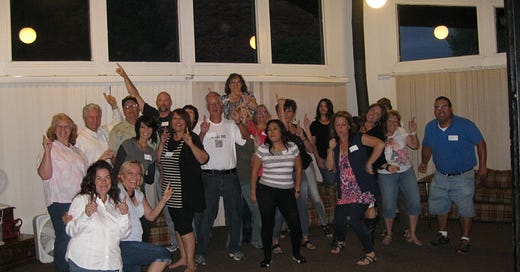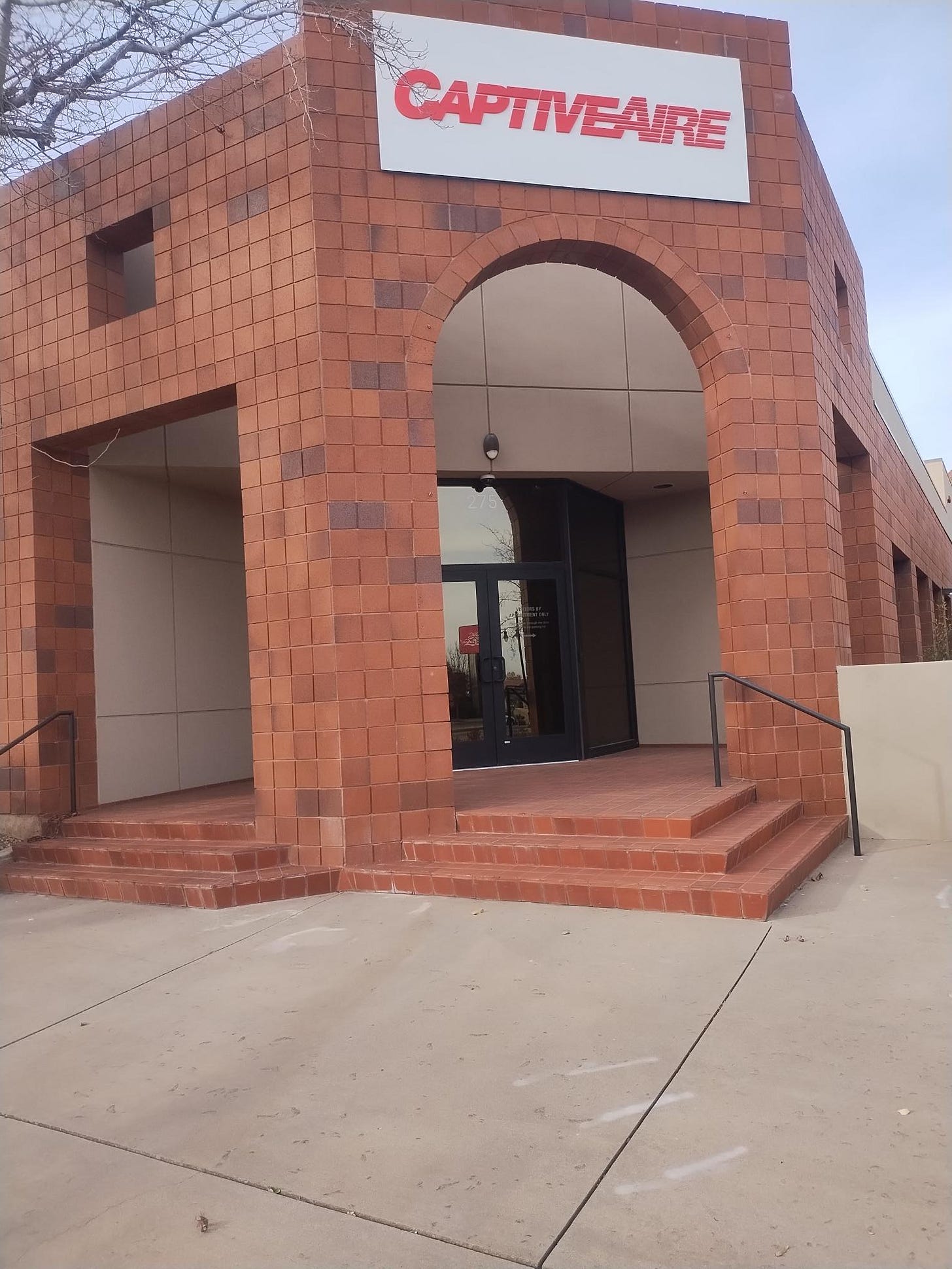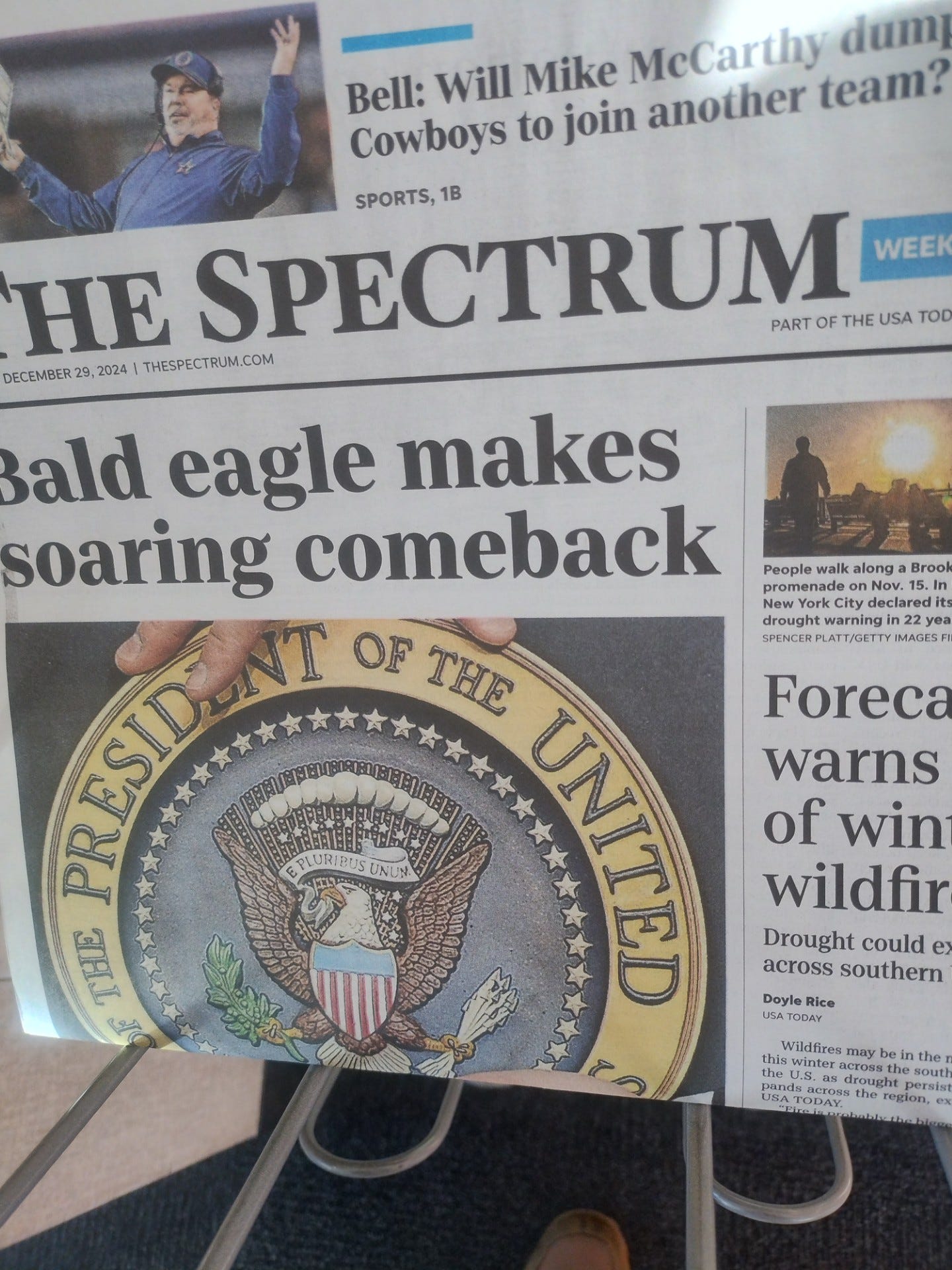Ken's Second Act
Bittersweet visit to a Utah city where I worked 10 years ago at a Gannett newspaper
Travelers using the interstate system seek to get to destinations near and afar as they speed past the scenery.
And in our quest to reach a destination, we might overlook worthy stops along the way. This applies even if we stay overnight.
I found this out after I moved in August 2014 to a city along Interstate 15 in Southern Utah where I had spent the night on several occasions over the past two decades: St. George. Motorists pass through whether they are driving north toward Salt Lake City, south to Las Vegas and beyond, or headed to Zion National Park.
I moved to St. George after a long bout of unemployment to accept a position at the Gannett-owned daily, The Spectrum. I soon discovered nearby hiking trails with spectacular scenery, including sandstone cliffs and volcanic rock formations. Sadly, the job turned out to be a disappointment. Management placed a premium on chasing car crashes and fires in the belief the coverage would draw eyeballs to the newspaper’s website and increase digital readership. That focus is derisibly called “clickbait.” I filled out paperwork that Gannett apparently used to qualify for a federal tax break for hiring an employee who was between jobs.
Unbeknownst to me, Gannett undertook a corporate-wide restructuring dubiously dubbed the Picasso Project to create “the newsroom of the future.” (Gannett is the nation’s largest newspaper company and owns my former hometown paper, The Desert Sun in Palm Springs, California.) The intent was to reach younger readers. The visionaries at corporate headquarters apparently were preparing for the day that newsprint would disappear. Reporters and editors applied for new jobs and in some cases vied for the same new jobs. New titles emerged such as “content strategist,” which closely resembled the city editor. The publisher advised staff to disregard the blogs about Picasso. Other newspapers and journalism newsletters reported that Gannett was cutting staff and in some cases pay. Older reporters, including me, were most vulnerable.
Meanwhile, we continued to tweet our stories and those of our colleagues before we went to work in the morning or afternoon. Then on one afternoon, I headed to a dirt-bike crash scene in an area popular with offroad enthusiasts. I sloshed through mud for perhaps a half mile and called the city editor because the mud was weighing down my shoes, making it difficult for me to proceed. Meanwhile, a helicopter flew the badly injured, 19-year-old man to the nearby regional hospital. Fortunately, I found one of the man’s friends close to my car and interviewed him.
I returned to the office as a going-away party ended for the editor-in-chief, who hired me. He was leaving to accept a job in the Midwest with the United Methodist Church. I left my muddied shoes outside so I wouldn’t track dirt onto the carpet. The feature editor snapped a photo of my shoes and posted it on Twitter, now known as X. Then, he gave me the boot: He smugly told me that I didn’t score high enough in the Picasso interview. The paperwork described the pending departure as a “reduction in force.” I had one month remaining on the job.
Perhaps the worst experience of my six-month employment occurred on the night before my last day. I drove to a minor-crash scene close to where I lived. A teenage driver failed to yield to an oncoming vehicle. While waiting to speak to the traffic cop, I chatted informally with the youth and his friends, telling them I wouldn’t use their names. The boys were sweet but not the mother of the driver. She came charging from across the street and confronted me. “Why are you talking to a minor?” She snapped a video of me, and asked for my name and the name of my supervisor. She grabbed my notes, which she couldn’t read anyway. I later got the official statement from the traffic cop.
On the next night, four co-workers met me for a going-away party at George’s Café, a restaurant/bar that offered live entertainment on Friday and Saturday nights. One of them referred to the new jobs Gannett had created to replace others like me who were being laid off. Another co-worker said I shouldn’t be “bitter” and said The Spectrum wasn’t a “bad place to work.” I never set foot in The Spectrum building since then. I told my former immediate supervisor, “I’ll probably never speak to you again.” (We still follow each other on X.)
My departure had two positive outcomes: I lost 10 pounds (later regained) and finally had a more normal personal life. After work on Friday and Saturday nights, I had patronized George’s Café and Jazzy’s Rock ‘n’ Roll Grill, a now-shuttered club that served the alternative culture scene in a staid, conservative churchgoing city.
After the layoff, I became active in a Meetup group of predominantly Mormon baby boomers. The group met for hikes, movies (non R-rated), dinners and other activities.
I got to see more of the scenic beauty of the area. One Mormon woman, a widow born in the Philippines, invited me to a fireside, but I had no interest in joining the Church of Latter-day Saints. The group members became my friends, but I have lost touch with most of them.
I was between jobs again, pushing 60 and didn’t qualify for unemployment benefits based on a formula from the Utah Department of Workforce Services. I was living off my savings and the dollars I earned writing for an alternative monthly newspaper. I was beginning to like living in St. George, but I had no future there. I didn’t want to work for the online newspaper because it was more obsessive with covering car crashes and the writing was subpar. Five months later, I landed a job 1,700 miles away in Kentucky, but layoffs within three months cut my employment short.
Since retiring to Prescott in October 2020, I have returned to St. George four times, most recently for two days before the end of the year. I suggested it to my niece’s family because the weather would be milder than staying in Williams, where we intended to book a ride on the Grand Canyon Railway; we planned a trip instead to Zion National Park. We stayed at a Best Western where I recalled attending a book promotion tour for Cliven Bundy. He became a right-wing folk hero when he and his supporters clashed in 2014 with U.S. Bureau of Land Management officials for nonpayment of leases for cattle grazing on federal land. Both sides avoided a gun battle. His sons later took over a wildlife refuge in Oregon. I mentioned him to the hotel desk clerk, but the St. George native knew nothing about him; she is only 23.
I dropped by a popular old-fashioned candy store, Thomas Judd’s Store Co. downtown, where I frequently gathered for a quick lunch before I started my workday. I surprised the owner when I showed up about four years ago. Heather looked at me and said, “I haven’t seen you in a million years.” A little exaggeration. I returned Dec. 30 and her husband, Graham, took my order. He said he attended Abia Judd Elementary School and Granite Mountain Middle School in Prescott. I sat outside at a table because the busy eatery no longer has seating indoors.
Lastly, I snapped a photo of the former newspaper building on St. George Boulevard.
CaptiveAire, which manufactures commercial kitchen ventilation systems, now occupies the building. I looked at a copy of the Sunday edition of The Spectrum
in Walgreens. It looked like a replated USA TODAY. It had no staff-bylined stories.
I accessed the newspaper’s website. It doesn’t list a staff directory for the newsroom, so I went on live chat to ask about the size of the staff. Rico gave a phone number for the newsroom. I called, but the recording listed the name of former editor Steve Kiggins – who left in December 2017—and I couldn’t leave a message. The reporters work out of their homes, a former colleague in advertising said.
Gannett used to be an innovator with splashy graphics and creative ways to report by including overlooked sources, but it has morphed into a heartless job killer as negative trends afflicted the newspaper industry. St. George is the fastest-growing city in Utah with a population of 107,424 and one of the fastest growing in the country, according to InsideClimateNews.org. Sadly, the opposite trend apparently has gripped the local daily newspaper. So much for the “newsroom of the future.”






We used to fly into St. George at regular intervals. First the old airport on top of the mesa that overlooks downtown and where the General Aviation service was appropriately called Above View. Later into to new airfield near the state line.
This is why nonprofits are going to be the future of local news coverage. Big corporations don’t care a whit about the communities